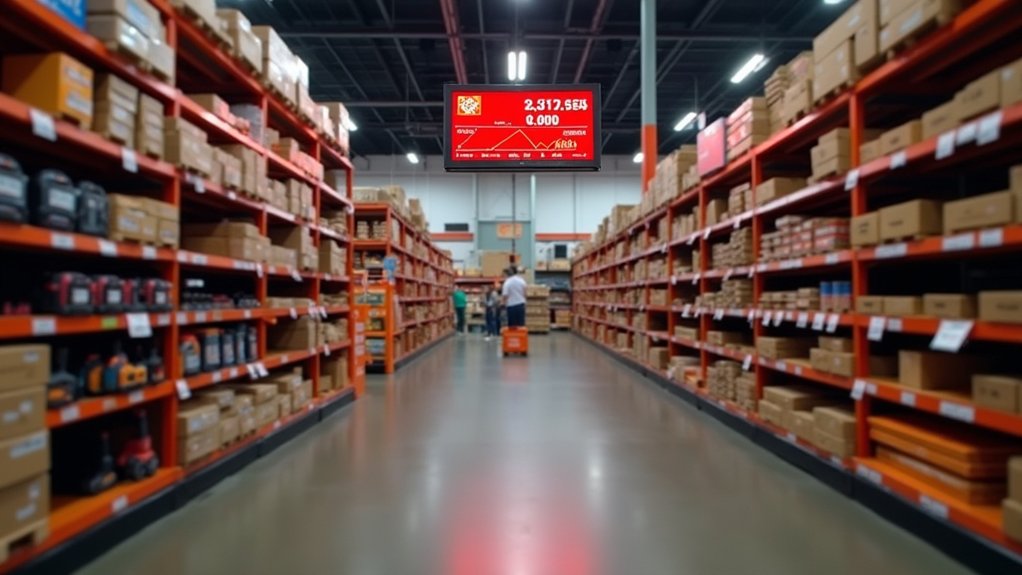Dow futures took a modest hit Tuesday while Home Depot boldly bucked the trend of price hikes plaguing retailers. Despite tariff pressures forcing competitors like Walmart to raise prices, Home Depot’s maintaining steady pricing thanks to its diversified supply chain and higher-margin products. The retail giant reported solid Q1 2025 sales of $39.9 billion, up 9.4% year-over-year. Home Depot’s contrarian strategy might just give it the edge other retailers wish they had.

The Dow Jones futures took a modest dip on Tuesday, even as retail giant Home Depot threw down the gauntlet in the ongoing tariff battle. While the broader market showed signs of hesitation, with S&P 500 futures slipping slightly, the Dow managed to eke out a tiny gain of 0.36%. Not exactly thriller material.
Home Depot’s bold move to hold prices steady amid tariff pressures is raising eyebrows across the retail sector. While competitors scramble to hike prices faster than you can say “inflation,” the home improvement giant is taking a different path. Their secret weapon? A seriously diversified supply chain that’s been years in the making. Smart cookies. The company’s higher margin products help absorb the impact of rising costs without passing them to customers. Executive VP Billy Bastek reinforced this stance by confirming that no broad increases would be implemented.
The numbers tell an interesting story. Home Depot’s Q1 2025 sales hit $39.9 billion, jumping 9.4% from the previous year. Sure, comparable sales dipped 0.3%, but U.S. sales still managed to climb 0.2%. Their earnings per share landed at $3.56, just shy of Wall Street’s expected $3.60. Not too shabby in this economic climate.
What’s really turning heads is Home Depot’s supply chain strategy. More than half their products come from good old American soil, and they’re making sure no single foreign country will account for more than 10% of their purchases by 2026. This approach reflects a strong risk mitigation strategy similar to portfolio diversification principles.
Meanwhile, Walmart’s already waving the white flag, warning customers about price hikes. Even Subaru’s jumping on the price-increase bandwagon.
The broader market context isn’t exactly sunshine and rainbows. Investors are tiptoeing around like cats on a hot tin roof, with major indices hovering below their all-time highs. The S&P 500 is sitting roughly 3% below its peak, as mixed signals from retailers keep everyone guessing.
Home Depot’s contrarian stance might just pay off. While other retailers play the tariff blame game, they’re positioned to potentially grab market share from price-hiking competitors. Sometimes zigging while others zag is exactly what the doctor ordered.





